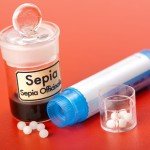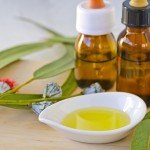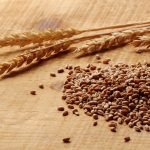The Neuroenteric Hypothesis for the Action of Herbal Medicines
Naturopathic physicians know that bitter herbs work by stimulating the gut. However, the actions of most other herbal medicines are considered to be largely independent of the gut, after absorption and hepatic metabolism are factored out of the equation. Many systemic actions of herbs may, in fact, be the direct result of effects of those herbs in the gut, or through communication between the gut and nervous system.
Immunomodulators
It is well established that botanical complex polysaccharides function as immunomodulators when taken orally by humans. Everything from Panax quinquefolius (American ginseng) to Echinacea purpurea to medicinal mushrooms is believed to act at least in part due to these constituents. However, these molecules are not absorbed intact into the systemic circulation to any significant degree.
Instead, it appears that these compounds are translocated through the gut lining by specialized mechanisms and then presented to local immune cells in the gut-associated lymphoid tissue (GALT) (Rice et al., 2005). Some of the polysaccharides do end up in systemic circulation after being translocated. These effects have not yet been clearly determined to occur in humans, but they do occur in several animal models (Watzl et al., 2005). That being said, very active research programs are underway that utilize microspheres composed of various types of polysaccharides as a means of delivering oral vaccines to the GALT (Mutwiri et al., 2002).
It is also possible that polysaccharides operate in part as prebiotics, fostering healthy commensal flora in the colon which, in turn, modulate immune function both locally and systemically (Forchielli and Walker, 2005). In humans, these effects are still at least partially the result of effects in the GALT (Saavedra and Tschernia, 2002). Preliminary animal studies support that complex carbohydrates combined with probiotic supplementation are more effective immunomodulators than either in isolation (Roller et al., 2004).
Reflex Demulcency
Complex polysaccharides have other effects that are somewhat inexplicable if they required absorption into systemic circulation. Demulcent herbs rich in these compounds have long been used to treat dry coughs and urinary tract infections (UTI). There is no evidence that orally administered polysaccharides are excreted into the bronchi, so it is unlikely these compounds or herbs that contain them act by being absorbed into circulation and directly affect the lungs. While a very tenuous case might be made for excretion of polysaccharides via the kidney, explaining their utility for UTI, this is highly unlikely.
That orally administered, carbohydrate-containing herbs do affect cough has been demonstrated in at least one animal study involving an extract of Althaea officinalis (marshmallow) (Nosal’ova et al., 1992). Unfortunately, the mechanism of action was not determined in this study.
Instead, the theory with the most traction is one in which these compounds are detected by the autonomic nervous system, and then signals are sent to the lungs and urinary tract via the vagus nerve. The vagus tells local goblet cells to produce more mucus. This effect has been referred to as reflex demulcency to make it distinct from direct effects.
Gut Flora Interactions
The neuroenteric hypothesis also reminds us that the status of the gut may affect absorption, metabolism and function of herbal constituents in the body. Gut motility, gut flora, pH, status of secretions and many other factors may affect medicinal plants taken orally. One rat study investigated the effect of simultaneous antibiotics administration with the traditional Chinese herbal formula shao yao gan cao tang, used for healing ulcers (He et al., 2001). Circulating levels of glycyrrhetic acid, a metabolite of glycyrrhizin found in Glycyrrhiza uralensis (gan cao, licorice) root, a critical part of the herbal formula, were reduced by antibiotic administration. The antibiotics were shown to have altered the flora such that their hydrolytic activity on the licorice glycosides was reduced.
Stomach acid levels can also affect the activity of medicinal herbs. One study actually found that stomach acid reduced the inflammation modulating efficacy of extracts of Harpagophytum procumbens (devil’s claw) (Soulimani et al., 1994). This may have been due to premature hydrolysis and either catabolism or absorption, then hepatic clearance of glycosides that are only medicinally activated if they reach the colon flora. Whatever the explanation, it does provide preliminary evidence that the status of the stomach can affect the efficacy of herbs.
The gut needs to be working properly for herbs to be absorbed and function. If herbs do not appear to be working in a patient, rather than simply dismissing them as ineffectual, thoughtful practitioners should consider whether the dose was correct, whether the dose form was optimal, whether the patient followed through with treatment properly and similar considerations. Now it is clearer that NDs should also consider whether the gut environment was optimal to both absorb the herbs and mediate many of their local and systemic effects.
The critical interactions between the gut, nervous system and herbal medicines need to be further investigated. Existing evidence strongly suggests that many systemic effects of herbs are mediated by neuroenteric interactions. The traditional focus of naturopathic doctors on the health of the gut may have even greater relevance than previously had been realized.
References
Forchielli ML, Walker WA: The role of gut-associated lymphoid tissues and mucosal defence, Br J Nutr 93(Suppl 1):S41-48, 2005.
He JX et al: The influence of commonly prescribed synthetic drugs for peptic ulcer on the pharmacokinetic fate of glycyrrhizin from Shaoyao-Gancao-tang, Biol Pharm Bull 24(12):1395-1399, 2001.
Mutwiri G et al: Induction of mucosal immune responses following enteric immunization with antigen delivered in alginate microspheres, Vet Immunol Immunopathol 87(3-4):269-276, 2002.
Nosal’ova G et al: Antitussive action of extracts and polysaccharides of marsh mallow (Althea officinalis L, var robusta), Pharmazie 47:224-226, 1992 [in German]
Rice PJ et al: Oral delivery and gastrointestinal absorption of soluble glucans stimulate increased resistance to infectious challenge, J Pharmacol Exp Ther 314:1079-1086, 2005.
Roller M et al: Intestinal immunity of rats with colon cancer is modulated by oligofructose-enriched inulin combined with Lactobacillus rhamnosus and Bifidobacterium lactis, Br J Nutr 92(6):931-938, 2004.
Saavedra JM, Tschernia A: Human studies with probiotics and prebiotics: clinical implications, Br J Nutr 87(Suppl 2):S241-46, 2002.
Soulimani R et al: The role of stomachal digestion on the pharmacological activity of plant extracts, using as an example extracts of Harpagophytum procumbens, Can J Physiol Pharmacol 72:1532-1536, 1994.
Watzl B et al: Inulin, oligofructose and immunomodulation, Br J Nutr 93(Suppl 1):S49-55, 2005.
 Eric Yarnell, ND, RH(AHG), is a graduate of Bastyr University. He completed a two-year residency with Silena Heron, ND, and served as chair of botanical medicine at the Southwest College of Naturopathic Medicine. He is past senior editor of the Journal of Naturopathic Medicine. Dr. Yarnell is a founding member and current president of the Botanical Medicine Academy and author of numerous textbooks and articles, including Naturopathic Urology and Men’s Health, Naturopathic Gastroenterology and Clinical Botanical Medicine. His area of clinical focus is urology and men’s health. He is assistant professor in botanical medicine at Bastyr University.
Eric Yarnell, ND, RH(AHG), is a graduate of Bastyr University. He completed a two-year residency with Silena Heron, ND, and served as chair of botanical medicine at the Southwest College of Naturopathic Medicine. He is past senior editor of the Journal of Naturopathic Medicine. Dr. Yarnell is a founding member and current president of the Botanical Medicine Academy and author of numerous textbooks and articles, including Naturopathic Urology and Men’s Health, Naturopathic Gastroenterology and Clinical Botanical Medicine. His area of clinical focus is urology and men’s health. He is assistant professor in botanical medicine at Bastyr University.










